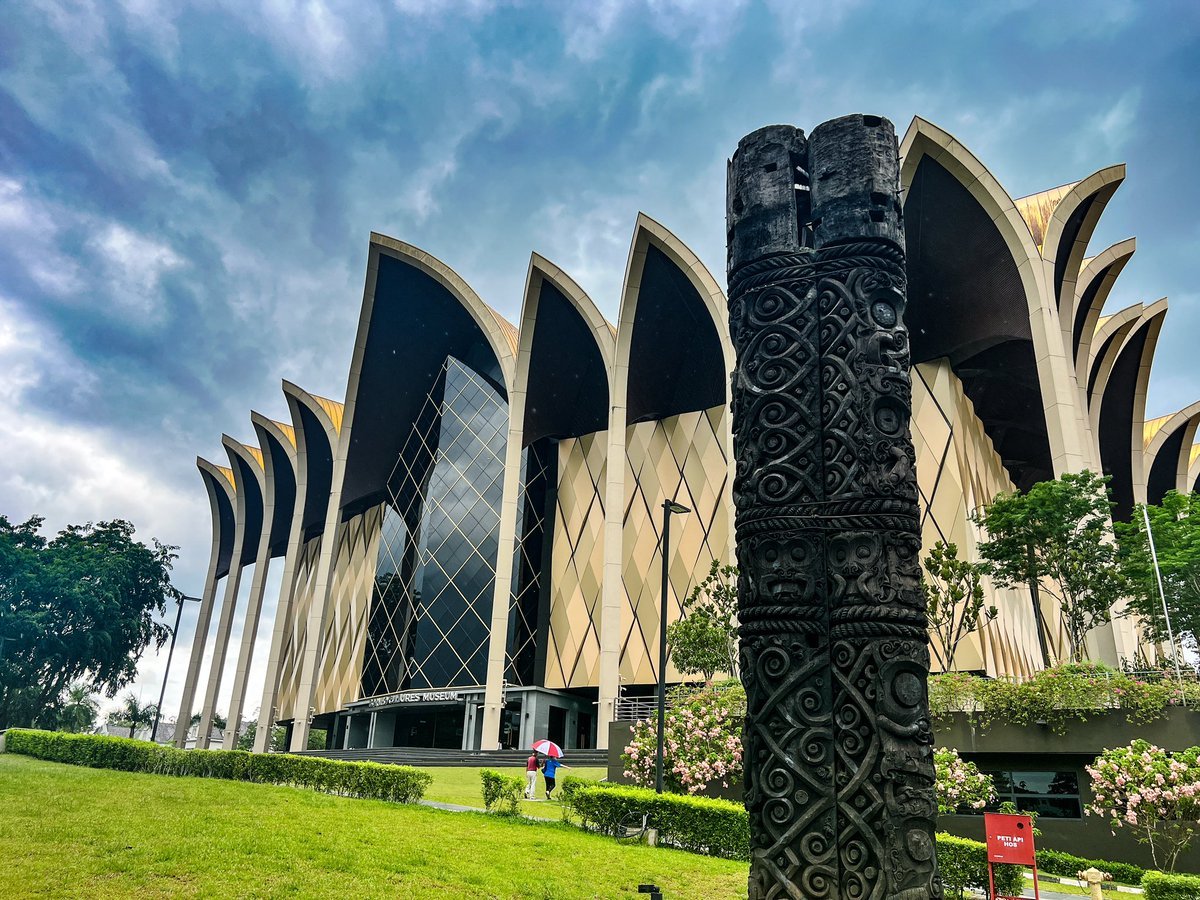Borneo Cultures Museum: Gateway to Indigenous Knowledge
Borneo Cultures Museum: Gateway to Indigenous Knowledge
Blog Article
Look Into the Interesting Globe of Borneo's Cultural Heritage: A Comprehensive Guide to the Cultures Museum Experience
Submersing oneself in the elaborate tapestry of Borneo's cultural heritage is akin to starting a voyage via time and practice. The blend of native tribes, standard handicrafts, fascinating performances, and historical stories housed within the boundaries of the island's museums offers a look right into a globe including lively custom-mades and profound traditions. As visitors traverse via these repositories of society, they are bid to check out a world where past and present intermingle, welcoming contemplation on the strength and splendor of Borneo's varied heritage.
Indigenous People of Borneo
Borneo is home to over 50 indigenous tribes, each with special social techniques and practices that have actually been maintained for generations. Amongst these people are the Iban, known for their elaborate tattoos and standard longhouses where multiple families reside.
These indigenous tribes play an important role in maintaining Borneo's rich cultural tapestry. Despite external impacts and innovation, several people remain to maintain their languages, beliefs, and customs. Site visitors to Borneo have the possibility to engage themselves in the distinct lifestyles of these people with cultural trips, homestays, and community-based tourism initiatives. By engaging with these indigenous neighborhoods, site visitors can obtain a deeper appreciation for the diversity and strength of Borneo's aboriginal heritage.
Standard Handicrafts and Artefacts
One popular example of standard inventions in Borneo is the production of woven goods - Borneo Cultures Museum. Proficient weavers make use of natural fibers like pandan, rattan, and bamboo leaves to develop intricate baskets, mats, and accessories decorated with vibrant patterns that hold symbolic definitions within the area
The art of woodcarving is another significant aspect of Borneo's conventional handicrafts. Artisans carve elaborate styles into different types of timber to create masks, sculptures, and musical instruments that not only serve functional functions however also hold cultural importance, typically illustrating folklore or spiritual beliefs.
Furthermore, Borneo is renowned for its beadwork, with artisans meticulously crafting beads from products like glass, seeds, and coverings to produce fashion jewelry, garments embellishments, and decorative items that display the area's lively aesthetic traditions. These traditional inventions and artefacts not only serve as substantial expressions of Borneo's social heritage yet additionally supply insights into the areas' ideas, values, and way of living.

Cultural Performances and Festivals
With a deep-rooted link to their cultural customs, the areas in Borneo come alive through vivid social performances and festivals that commemorate their heritage. Site visitors to Borneo can immerse themselves in these celebrations, gaining a deeper understanding of the region's cultural heritage and experiencing the warm hospitality of its individuals. Social performances and festivals offer as a dynamic pointer of Borneo's abundant social tapestry and the importance of protecting these practices for future generations.
Historical Stories and Artifacts
Checking out the historic narratives and artifacts of Borneo offers a fascinating peek into the region's rich past and cultural development. Borneo's historic tapestry is woven with varied influences, reflecting the communications between indigenous tribes, Chinese investors, European colonizers, and Malay sultanates. The artifacts found in Borneo showcase this elaborate background, varying from standard Borneo Cultures Museum crafts like elaborate beadwork and woodcarvings to archaeological prizes such as ancient pottery and tools.
Among the most engaging elements of Borneo's historic stories is the preservation of oral traditions passed down through generations. These stories supply understandings into the ideas, custom-mades, and every day lives of Borneo's occupants throughout the centuries. The artefacts discovered from historical websites provide tangible connections to these narratives, permitting site visitors to witness the material society of past cultures firsthand.
Contemporary Cultural Conservation Initiatives

In addition, curricula and cultural exchange activities play an essential role in elevating understanding about the relevance of protecting Borneo's distinct social heritage. By involving schools, galleries, and the larger community in conversations and activities that commemorate Borneo's diverse societies, conservation initiatives can get momentum and assistance for long-term sustainability. Cooperations between governmental bodies, charitable organizations, and neighborhood neighborhoods are essential in driving these preservation endeavors onward, making certain that Borneo's rich social heritage remains vivid and treasured for generations ahead.
Final Thought
In conclusion, the cultural heritage of Borneo is abundant and diverse, with native people, conventional inventions, cultural performances, events, historical narratives, and modern conservation efforts all adding to its uniqueness and value. Site visitors to Borneo's cultural museums can obtain a deeper understanding and recognition of the area's cultural heritage, permitting a much more immersive and informing experience.
Immersing oneself in the elaborate tapestry of Borneo's social heritage is akin to embarking on a trip via time and tradition.With a deep-rooted connection to their social practices, the areas in Borneo come alive with lively social efficiencies and festivals that celebrate their heritage. Cultural performances and celebrations serve as a dynamic pointer of Borneo's rich cultural tapestry and the value of preserving these practices for future generations.
Additionally, instructional programs and social exchange activities play a vital duty in elevating recognition about the importance of preserving Borneo's distinct cultural heritage. Partnerships between governmental bodies, non-profit organizations, and local communities are vital in driving these conservation ventures forward, guaranteeing that Borneo's rich cultural heritage remains vibrant and cherished for generations to come.
Report this page